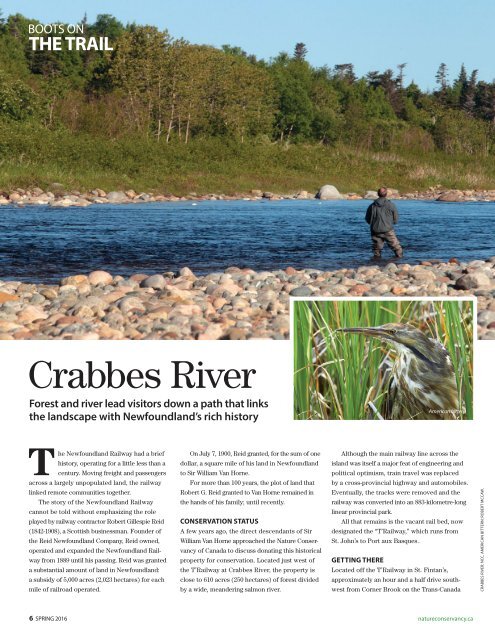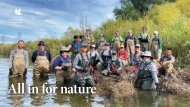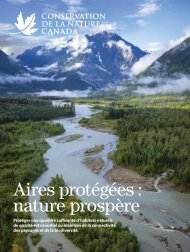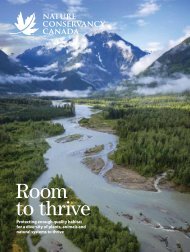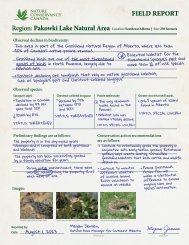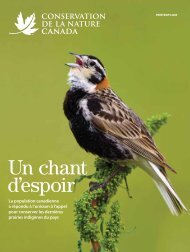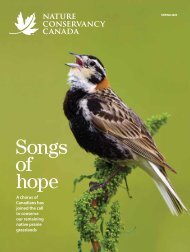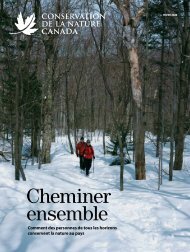NCC Magazinespring 2016
Create successful ePaper yourself
Turn your PDF publications into a flip-book with our unique Google optimized e-Paper software.
BOOTS ON<br />
THE TRAIL<br />
Crabbes River<br />
Forest and river lead visitors down a path that links<br />
the landscape with Newfoundland’s rich history<br />
American bittern<br />
The Newfoundland Railway had a brief<br />
history, operating for a little less than a<br />
century. Moving freight and passengers<br />
across a largely unpopulated land, the railway<br />
linked remote communities together.<br />
The story of the Newfoundland Railway<br />
cannot be told without emphasizing the role<br />
played by railway contractor Robert Gillespie Reid<br />
(1842-1908), a Scottish businessman. Founder of<br />
the Reid Newfoundland Company, Reid owned,<br />
operated and expanded the Newfoundland Railway<br />
from 1889 until his passing. Reid was granted<br />
a substantial amount of land in Newfoundland:<br />
a subsidy of 5,000 acres (2,023 hectares) for each<br />
mile of railroad operated.<br />
On July 7, 1900, Reid granted, for the sum of one<br />
dollar, a square mile of his land in Newfoundland<br />
to Sir William Van Horne.<br />
For more than 100 years, the plot of land that<br />
Robert G. Reid granted to Van Horne remained in<br />
the hands of his family; until recently.<br />
CONSERVATION STATUS<br />
A few years ago, the direct descendants of Sir<br />
William Van Horne approached the Nature Conservancy<br />
of Canada to discuss donating this historical<br />
property for conservation. Located just west of<br />
the T’Railway at Crabbes River, the property is<br />
close to 610 acres (250 hectares) of forest divided<br />
by a wide, meandering salmon river.<br />
Although the main railway line across the<br />
island was itself a major feat of engineering and<br />
political optimism, train travel was replaced<br />
by a cross-provincial highway and automobiles.<br />
Eventually, the tracks were removed and the<br />
railway was converted into an 883-kilometre-long<br />
linear provincial park.<br />
All that remains is the vacant rail bed, now<br />
designated the “T’Railway,” which runs from<br />
St. John’s to Port aux Basques .<br />
GETTING THERE<br />
Located off the T’Railway in St. Fintan’s,<br />
approximately an hour and a half drive southwest<br />
from Corner Brook on the Trans-Canada<br />
CRABBES RIVER: <strong>NCC</strong>. AMERICAN BITTERN: ROBERT MCCAW.<br />
6 SPRING <strong>2016</strong> natureconservancy.ca


